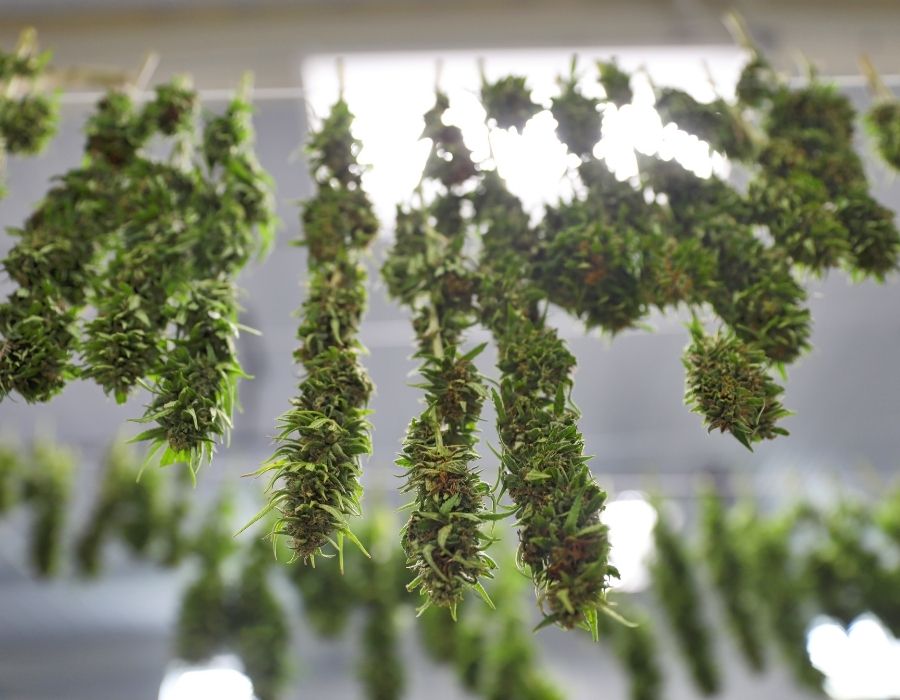It’s in the bud: what the ideal dry feels like
The delicate squeezing method mentioned above is one of several indicators of optimal drying. Properly dried buds will have a little bit of “give” or feel “spongy” on the outside when squeezed but will give way to a dense, firm resistance. This indicates that inside, the bud is dry, with any remaining moisture left on the bud’s outermost layers.
In addition to the gentle squeeze, the cultivator can check for dryness levels by snapping stalks off the base of the bud. If the stalks are snapping cleanly off (bonus points for a snap! sound) after 4-7 days of drying, the bud is ready to cure.
If stalks are bending rather than snapping, then there is still moisture left. Another way to check is by flicking off the edges of leaves on the outermost layer of the bud using a fingernail- if they come off the bud easily, then the bud is ready to proceed to the next stage.
At the end of the drying stage, the grower’s goal is for any moisture to remain in the outermost layers of the bud rather than inside or in the stalks. This improves the density of the bud and is how growers can achieve rock-hard, high-quality buds. An added benefit of the drying stage is increased potency, as the chemical processes that convert non-psychoactive cannabinoids to THC continue in the ideal environment (if it is too hot, these processes will stop).
Preserving quality – the importance of curing
Upon completion of the initial drying process, cannabis buds are best cured by storing in mason jars or airtight containers in a cool, dark place, as exposure to direct light will degrade cannabinoid content (decreasing potency) and volatile terpenes deteriorate in heat. Curing can take weeks or even months to correctly accomplish – thankfully, the steps are relatively straightforward.
If the drying stage removes a majority of moisture from harvested buds, curing follows up by continuing to draw any excess moisture leftover from the drying process from the inside of the bud. Handheld hygrometers kept inside each curing jar to monitor humidity levels.
The cultivator will also want to gently squeeze their curing buds in the jar in the first days of curing. Buds that seem dry on the outside will re-hydrate, and squeezing will inform the grower of how much moisture has been drawn out.
Too much humidity inside the grower’s containers results in “squishy”, “sweaty” buds and can be managed by opening the containers for a short while to refresh the air inside and evaporate moisture. A handy trick to monitor overall curing conditions is to place several bare stalks in the container with the flowers. When the stalks are cleanly snapping in half instead of bending, then the cultivator can be confident that their buds have cured properly.
Humidity packs such as Boveda 62s that maintain humidity inside containers steadily at 62% can also be kept inside glass jars alongside the curing bud. This will keep them from over-drying. Properly cured cannabis flowers will smell strongly of their terpenes rather than the vegetal “green” smell of chlorophyll.
Growers who cure their cannabis buds for a period of two to three weeks can generally expect a high-quality smoking experience from the finished product: an extremely “loud” smell of preserved terpenes, buds that glisten with shiny trichomes, a very smooth smoking experience with little of the harsh throat burning sensation, and minimal headaches. Curing is one of the most underappreciated aspects of cannabis cultivation, and properly cured buds can elevate a crop from average to exceptional.
